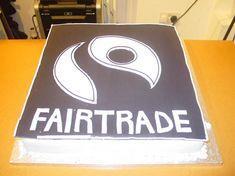
Recognition of the Fairtrade Mark has increased to 39 per cent this year, up from 25 per cent in 2003. And the percentage of people able to associate the mark with the definition "guarantees a better deal for third world producers" increased to 42 per cent in 2004 - up from 33 per cent in 2003.
With a rise of 14 points, this constitutes the most dramatic year-on-year increase in public recognition and understanding of the mark in its 10-year history. According to MORI, a 3 per cent rise relating to awareness in a poll of this size is regarded as "statistically significant".
The Fairtrade Foundation has welcomed Mori’s findings especially given that some 63 per cent of people who recognise the mark say they have subsequently bought Fairtrade products. And 86 per cent of people who buy Fairtrade products say the mark is "fairly important" or "very important" to them.
"We are delighted that the poll shows the strength of consumer confidence in the Fairtrade mark which is the only independent guarantee that producers receive a better deal," said Harriet Lamb, executive director of the Fairtrade Foundation. "Shoppers clearly like the assurance of independent certification and monitoring that the Fairtrade mark alone provides. The rapidly rising sales prove that consumers are ready to put their money where their mouth is, and to play their part in creating a fairer world."
Retail sales of products with the Fairtrade mark for 2003 were worth an estimated £92 million, 46 per cent up on 2002 when £63 million was spent by UK shoppers. At the beginning of 2004, shoppers were spending over £2m a week on products with the Fairtrade mark, compared with the £2.7m spent in the whole of 1994.
While recognition of Fairtrade is still highest among women (42 per cent compared with 35 per cent of men) and people in the age group 45-54 (47 per cent) and among social classes AB (54 per cent). While recognition is still weakest among younger people and people on lower incomes, the Mori results show that Fairtrade is now having greater success than before in penetrating these markets.
"There is now a tide of public opinion backing Fairtrade certified products," said Lamb. "The Fairtrade mark was launched 10 years ago precisely to give consumers the crucial assurance of an independent guarantee and avoid a plethora of confusing claims by companies. The public clearly want Fairtrade and they want it independently certified."
To use the Mark on a product, companies must: source from producer organisations that have been inspected and certified against international Fairtrade standards; pay a price to producers that covers the costs of sustainable production and living; pay a premium for producers to invest in business development or social projects.
Companies meeting these standards can obtain a licence to use the mark on specific products in the UK by signing a trading agreement with the Fairtrade Foundation. The foundation monitors the licensee companies to ensure that they observe these terms for any product labelled as Fairtrade.
The Fairtrade Foundation attributes much of the increase in awareness shown in this year’s poll to its successful promotion of Fairtrade with consumers, and the significant take-up among companies and retailers. There are now over 250 products available from 112 companies.
Globally, Fairtrade produce is sourced from 370 producer organizations in 45 countries, representing approximately 800,000 farmers and workers. Fairtrade is benefiting nearly 5m people, including family dependants.
The MORI survey is an annual survey commissioned by the Fairtrade Foundation. The 2004 survey involved a nationally representative sample of 2,050 UK adults. interviewed face to face in their homes by MORI between 25 and 30 March 2004. All data have been weighed to the known profile of the British population.
Fairtrade now has four per cent of the total UK banana market.



